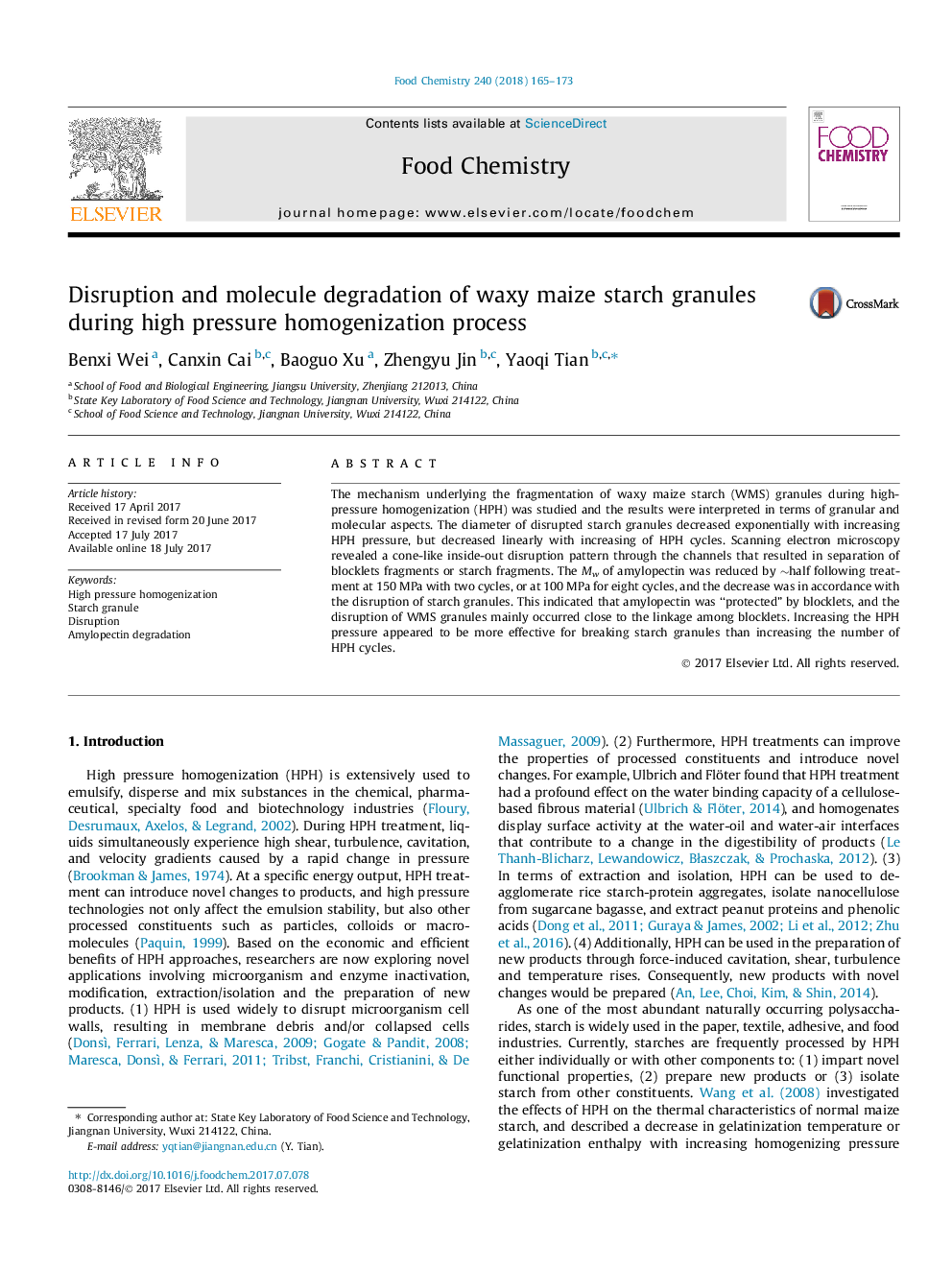| Article ID | Journal | Published Year | Pages | File Type |
|---|---|---|---|---|
| 5132453 | Food Chemistry | 2018 | 9 Pages |
â¢High pressure homogenization induced an inside-out disruption of starch granule.â¢Disruption of starch granules occurred close to the linkage among blocklets.â¢Degradation of amylopectin was in accordance with disruption of starch granule.â¢Increase of pressures was a more efficient way to break starch granule.
The mechanism underlying the fragmentation of waxy maize starch (WMS) granules during high-pressure homogenization (HPH) was studied and the results were interpreted in terms of granular and molecular aspects. The diameter of disrupted starch granules decreased exponentially with increasing HPH pressure, but decreased linearly with increasing of HPH cycles. Scanning electron microscopy revealed a cone-like inside-out disruption pattern through the channels that resulted in separation of blocklets fragments or starch fragments. The Mw of amylopectin was reduced by â¼half following treatment at 150Â MPa with two cycles, or at 100Â MPa for eight cycles, and the decrease was in accordance with the disruption of starch granules. This indicated that amylopectin was “protected” by blocklets, and the disruption of WMS granules mainly occurred close to the linkage among blocklets. Increasing the HPH pressure appeared to be more effective for breaking starch granules than increasing the number of HPH cycles.
